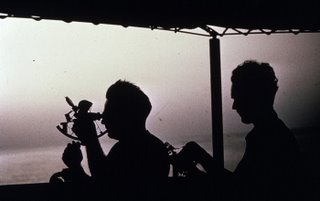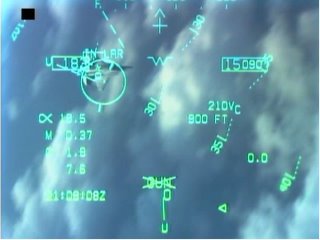So went my response to a recent query from someone who noticed a certain wistfulness about me whilst talking of the sea. “What do you miss most about it?” they asked.
To be sure, I missed the flying, the sense of purposeful direction and immediate feedback entailed with operations at sea, the unsullied horizon, the scent of the salt air – all those were (are) longed for. But most of all, I miss the stars.
Growing up in the Midwest next to the wannabe metropolis that was Omaha (no question about its status now); I had become familiar with the night sky. Summers spent well back from “civilization” either in the mountains of Montana, the deserts of the Southwest US or an island off Nova Scotia bred an easy familiarity with the denizens of the night sky. Antares, Markab, Betelgeuse, Sirius, Altair and Polaris; became personal companions on many a dark, quiet night across each of the seasons. Later, first with binoculars then a refracting telescope, other objects swam into clearer focus – the
Pleiades, Andromeda, the rings of Saturn and so much more.
Later (much later) as an NROTC student I looked forward to

junior year when we divined the mysteries of celestial navigation and those objects which had been just there for the looking were now sought with determined purpose. Like a sorcerer’s apprentice, I delved through Air and Nautical almanacs, parsed Bowditch and divined tables of calculations to arrive at (very) rough approximations of where we were. Well, at least were supposed to be. Approximately.
Time passed though and the demands of a warfare specialty that placed one in dark rooms bathed by the artificial light of radar scopes and red lights asserted itself and opportunities, especially on the carrier, to spend time with one’s celestial acquaintances was all too infrequent. The occasional transit offered brief chances, apart from the interminable AOMs and paperwork to be caught up. More often though, night was time spent coming from or going to the plane. Night, on an operating flight deck, was a time and place to keep your head down and your gaze focused on your immediate vicinity, all the better to avoid the snares of tie down chains, bomb carts and spinning props. The stars…well the stars were a last, furtive glance over your shoulder before disappearing into the fluorescence of the ship’s interior, punctuated by a quiet sigh.
Many years later, the call from the detailer came with the much anticipated and dreaded news for post-command duty. Expectations were CV/CVN-Ops O because “that’s where VAW NFOs go.” And that was the initial read – OPS on Enterprise, take it or leave it. Of course it was accepted and plans made. However, not 48 hours later the call again – “Would you be interested in navigator on the Eisenhower?” – all the more intriguing because of the manner it was placed, much less the topic… “Definitely” was the immediate reply – for suddenly the chance to reacquaint with old friends was in the offing. Truth be known, if Coral Sea had still been around, ‘gator on her would have had just as prompt a reply.
And so we found ourselves again, on windswept decks shooting the evening fix. Savoring old friends’ welcoming embrace and feeling justified because now – it’s my job. Fighting the haze of a VACAPES summer eve to discern the horizon, learning to quickly shoot fixes between the last trap and the turn to reset for the next launch/recovery cycle, challenging my QMC to competitive “shoots” – and getting my you-know-what soundly handed to me early on, but learning tricks of the trade in the process. The price of foreshortened sleep, long days (and nights) on the bridge, and all the rest of the trials and privileges of ship’s company was amply balanced by moments such as these. Moments like catching a comet at the height of splendor when shooting the morning fix– shining like a bright streak of silver-white paint, brushed upon the promise of dawn. Or stepping out onto the starboard bridge wing after midnight and seeing a dome of stars so bright and plentiful and set against a black sky that seems like it would pull your eyes out of their sockets; so stunning that you catch your breath and just know you are stealing a look at the LORD's treasure chest.


But time passes and now, sitting abreast another major metropolitan area, I fruitlessly cast my eyes aloft, searching for old friends. Instead, I am met with a milky, yellowish residual glow of urban activity – the bright lights of a nations’ capitol that lies in restless sleep. In vain I search, occasionally capturing a wandering planet or one of the brighter stars. I know they are there, beckoning, patiently as they have through the ages. Oh sure, we could (and sooner one prays rather than later) move out – further from the bright center of this universe, but the march of progress is nothing if not inexorable and all too soon, what once were dark skies are suddenly lightened by Man’s pursuit. But in good time, when we are quit of these earthly pursuits, we will be reunited, this time for all eternity. In the meantime, I will continue to search.

“I miss the stars…”
- SJS










































